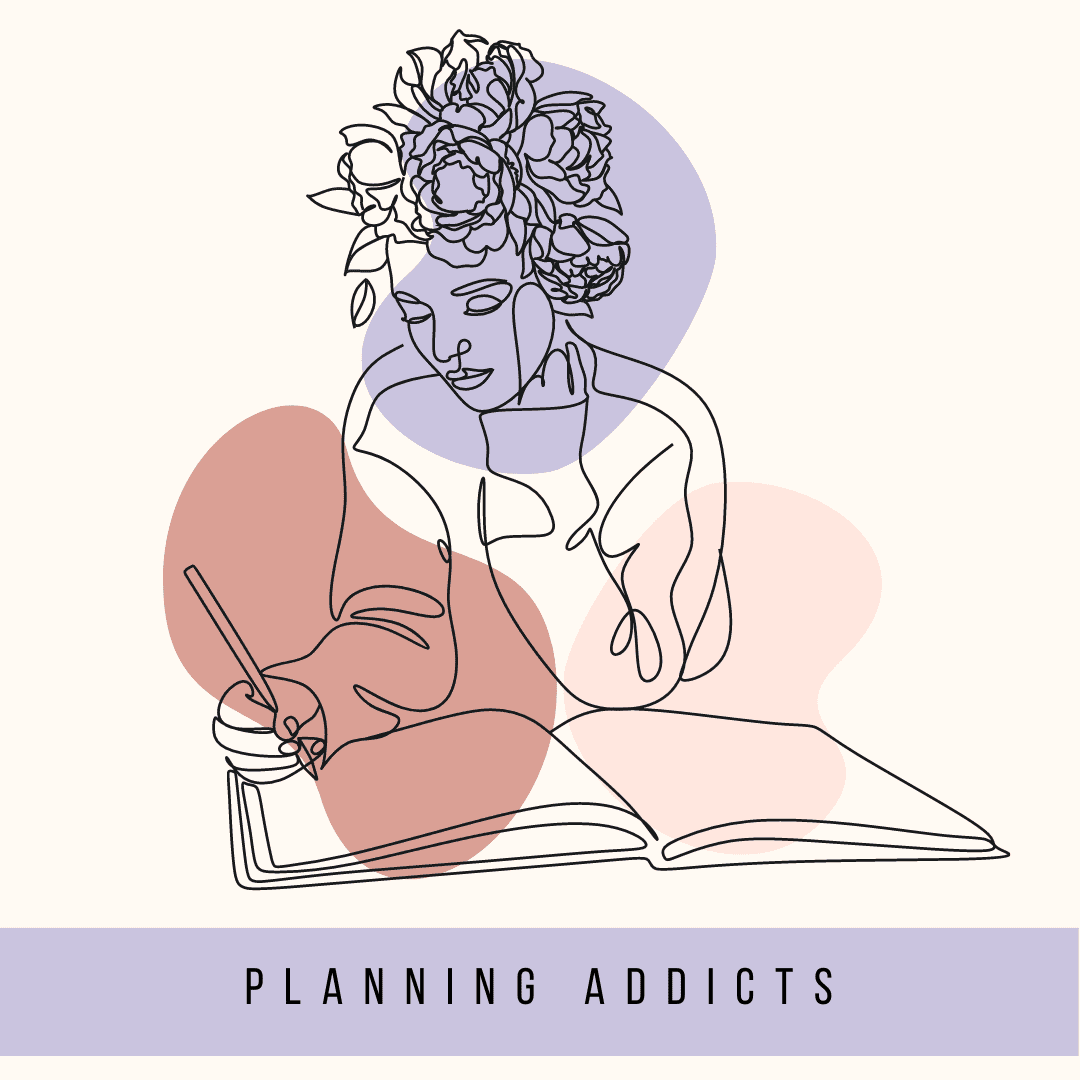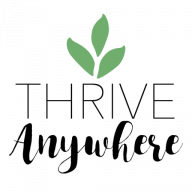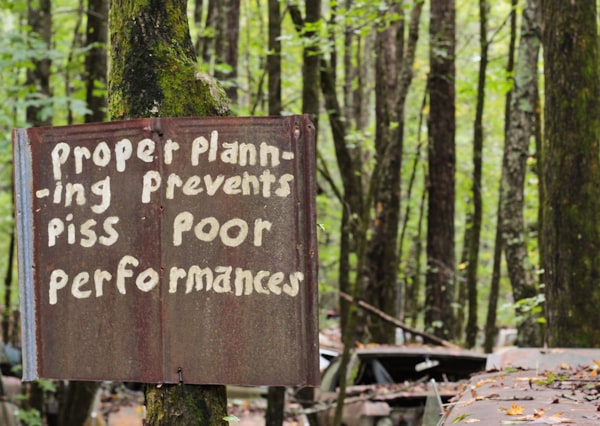Effective Planning for Non-Planners

Some people are naturally averse to planning and organization. Can you IMAGINE?!
They're the "non-planners." If you find yourself in this category, don't worry; I think I can help you.
If you're open to exploring the benefits of planning, debunking common myths, and providing simple solutions to help you transform into a more organized and productive individual, then maybe this will work out.
Understanding Non-Planners
Defining the Non-Planner
A non-planner is someone who prefers to live life spontaneously, without structured schedules or meticulously organized to-do lists. Non-planners often thrive in the chaos of the moment, relishing the freedom of unpredictability.
While this approach can have its merits, it can also lead to unnecessary stress, missed opportunities, and a feeling of being overwhelmed when responsibilities pile up.
Are You a Non-Planner?
To determine whether you fall into the non-planner category, reflect on your daily routines and habits.
Do you tend to leave tasks until the last minute?
Are deadlines often a source of anxiety rather than a guideline?
Does the thought of making a long-term plan make you uncomfortable?
If you find yourself nodding in agreement, you might indeed be a non-planner. But don't worry; this guide is here to help you adapt and find a balance between spontaneity and organization.
Signs of a Disorganized Lifestyle
Recognizing that you may be leading a disorganized life is the first step towards positive change. Here are some common signs that you might be a non-planner:
1. Procrastination
You frequently delay important tasks until the last minute, leading to unnecessary stress and compromised quality of work.
2. Forgetfulness
You often forget important dates, appointments, or commitments, relying on memory alone.
3. Cluttered Spaces
Your living and working spaces are consistently disorganized and cluttered, making it challenging to find what you need.
4. Missed Opportunities
You occasionally miss out on valuable opportunities because you didn't plan or prepare in advance.
5. Time Management Challenges
You struggle with managing your time effectively, often feeling like there aren't enough hours in the day.
Common Misconceptions
There are several misconceptions about non-planners that can hinder personal growth and prevent them from adopting planning techniques. Let's debunk these misconceptions to provide a clearer perspective:
Misconception 1: "Planning Restricts Freedom"
One common myth is that planning restricts spontaneity and creativity. In reality, planning can provide a framework that enhances freedom by reducing the stress of last-minute decisions and allowing for more intentional choices.
Misconception 2: "I'm Just Not a Planner"
Many non-planners believe they're inherently incapable of planning. However, planning is a skill that can be learned and adapted to suit individual preferences and lifestyles.
Misconception 3: "Planning Is Only for Type-A Personalities"
Planning is not exclusive to Type-A personalities. It's a valuable tool for anyone looking to achieve their goals, reduce stress, and stay organized, regardless of their personality type.
Misconception 4: "Planning Is Time-Consuming"
Effective planning doesn't have to be time-consuming. There are simple and efficient planning methods that can be integrated seamlessly into daily life.
Misconception 5: "I Can Manage Without Planning"
While some non-planners believe they can manage without planning, they may not realize the potential for improvement in various aspects of their lives with effective planning strategies.
Debunking these misconceptions is the first step in embracing planning for non-planners. It opens the door to exploring the benefits and finding a planning approach that suits your unique preferences and needs.
Recognizing those signs and misconceptions isn't shameful; it's an opportunity for growth - or at least getting your appointments in order.
Understanding where you stand and how your brain works can help you take the necessary steps to become more organized and efficient (yes, waking up to your 1st alarm counts), even if planning doesn't come naturally to you.
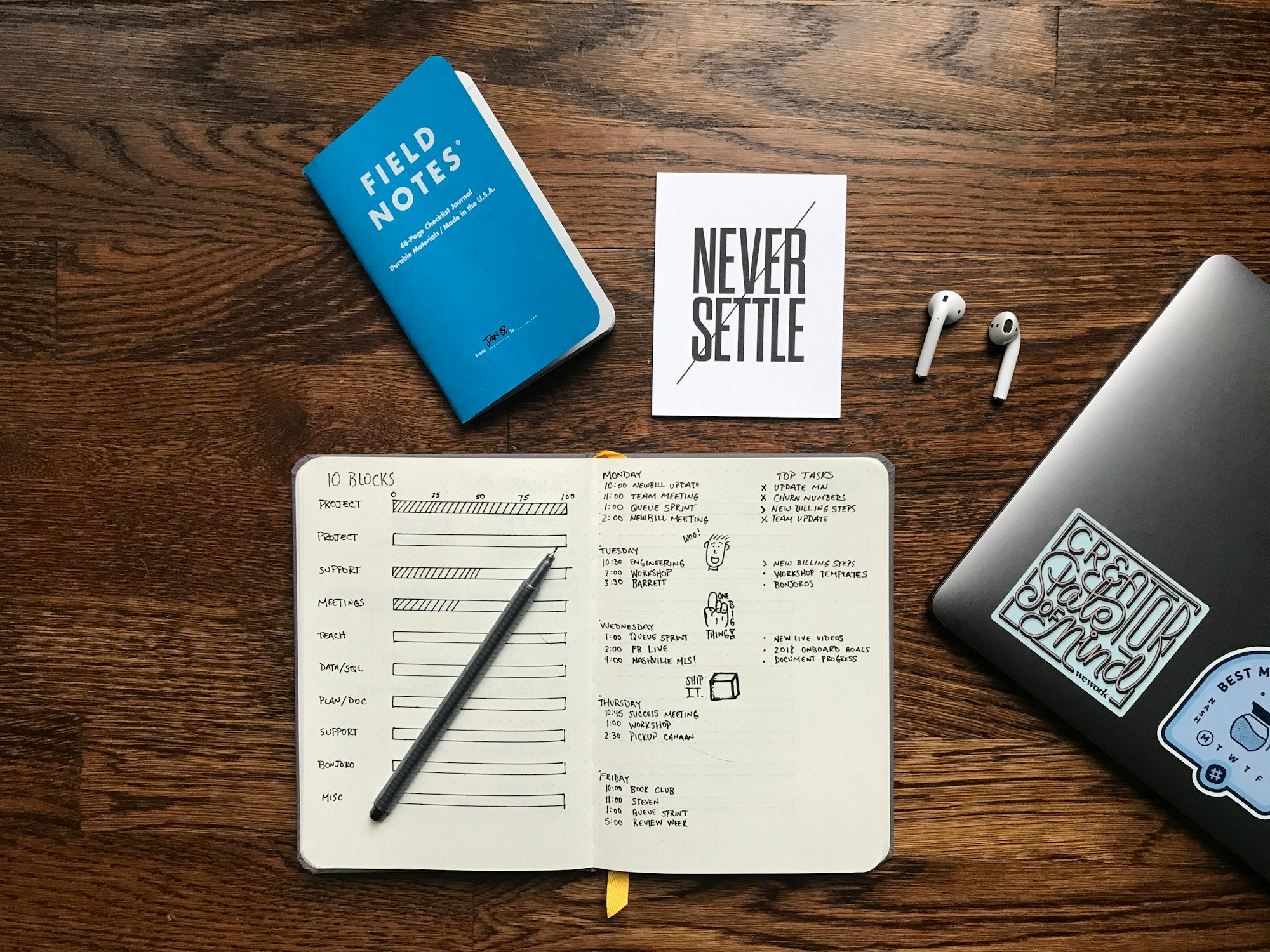
Why Non-Planners Should Consider Planning
The Benefits of Planning
Planning offers advantages to those who can do it, regardless of your natural inclination toward spontaneity or structure. By embracing planning, you can experience substantial improvements in various aspects of your life, including:
Stress Reduction and Increased Productivity
One of the most significant benefits of incorporating planning into your life is the substantial reduction in stress levels. When you have a clear plan in place, it alleviates the anxiety associated with uncertainty and disorganization. Instead of frantically reacting to situations as they arise, you're proactively addressing them, which empowers you to maintain a sense of control and composure.
Moreover, planning is a powerful tool for boosting productivity. By outlining your tasks and priorities in advance, you're able to allocate your time and resources more efficiently.
This results in increased focus, better time management, and a greater sense of accomplishment as you check off completed tasks from your planner.
Success Stories
Want some real examples of people who started planning even though they thought they didn't need (or want) to?
Sarah, a self-proclaimed non-planner, used to rely on her memory to manage her schedule, grocery lists and entire life. This mostly led to missed appointments and deadlines (hello, your phone bill is overdue!), causing stress and frustration.
After adopting a simple daily planner, she only had to remember one thing - to check her planner!
As a result, Sarah experienced a significant decrease in stress and an increase in productivity. She now swears by her planner lists and attributes her newfound success to this tool.
Michael, another former non-planner, struggled with procrastination for years. He usually left important tasks until the last minute, causing unnecessary stress and jeopardizing his performance at work.
When he decided to try planning in the form of bullet journaling, he discovered that breaking his tasks into smaller, manageable steps and setting deadlines helped him overcome procrastination.
Not only did he complete his work more efficiently, but he also had more free time to pursue his passions.
These real-life examples illustrate that planning is not reserved for a specific personality type; it can benefit anyone willing to really give it a go.
One caveat: these things may not help you if you have a neurodiverse brain with ADHD. But, they also might. So, why not at least try one type of planning?

Simple Planner Solutions
Introduction to Simple Planners
Simple planners are the ideal entry point for individuals who are new to the world of planning. These planners are thoughtfully designed with user-friendliness in mind, making them accessible and intuitive for beginners. They provide a structured framework without overwhelming you with unnecessary complexity, ensuring a smooth transition into the world of planning.
Review of Planner Options
There are a LOT of planner options, right? If you haven't already, you'll soon discover a wide array of planner options available in the market. Each type of planner caters to different preferences and needs. The question is; which one is right for you?
1. Daily Planners
Daily planners are designed for individuals who prefer to break their day into specific time blocks. They provide ample space to jot down appointments, to-do lists, and goals for each day. If you enjoy a detailed, day-to-day approach to planning, a daily planner might be the perfect fit.
2. Weekly Planners
Weekly planners offer a broader view of your schedule, allowing you to plan your entire week at a glance. They often include sections for weekly goals and priorities, making it easier to track progress over longer timeframes.
3. Monthly Planners
Monthly planners provide an even broader perspective by focusing on an entire month. They are great for setting monthly goals, tracking important dates, and planning events or projects that span several weeks.
4. Bullet Journals
Bullet journals are highly customizable and perfect for those who enjoy creative expression in their planning. With a blank canvas, you can design your own layouts, trackers, and lists. Bullet journals allow for complete flexibility and personalization.
How to Choose the Right Planner
Selecting the perfect planner may seem like a daunting task, but with some thoughtful consideration, you can find one that aligns seamlessly with your lifestyle and goals. Here are some tips and advice to guide you in choosing the right planner:
1. Determine Your Goals and Needs
Begin by identifying what you want to achieve with your planner. Do you need to increase productivity, manage your time better, or simply stay organized? I've changed planners and planning styles several times over the years as my life or work changed. Knowing your goals will help you select a planner that caters to your specific needs.
2. Consider Your Schedule
Take a look at your daily, weekly, and monthly routines. If you have a busy schedule with many appointments and tasks, a daily or weekly planner may be more suitable. On the other hand, if you prefer a broader view, a monthly planner might be the better choice.
3. Think About Layout and Design
The layout and design of the planner matter. Some people prefer structured layouts with designated sections for tasks, goals, and notes, while others prefer a more open and flexible format. Choose a design that resonates with you and makes planning enjoyable.
4. Size and Portability
Consider the size and portability of the planner. Will you be carrying it with you daily, or will it stay on your desk? Ensure that it's a convenient size for your lifestyle.
5. Budget
Planners come in various price ranges, so establish a budget before you start shopping. Remember that a well-chosen planner can be an investment in your productivity and organization.

Incorporating Planning into Daily Life
Integrating planning into your daily routine need not be a complex or time-consuming endeavor. Here are some strategies to seamlessly incorporate planning into your daily life:
1. Morning Ritual
Consider making planning a part of your morning ritual. Start your day by reviewing your goals and priorities, and create a to-do list for the day ahead. This sets a positive tone for the day and helps you stay focused.
2. Digital Tools
Explore digital planning tools and apps that can sync with your devices. These tools offer convenience and accessibility, allowing you to plan on-the-go.
3. Weekly Check-Ins
Set aside a specific time each week for a more comprehensive planning session. During this weekly check-in, you can review your goals, assess your progress, and make adjustments for the upcoming week.
4. Break Tasks Into Smaller Steps
When planning, break larger tasks into smaller, more manageable steps. This makes it easier to tackle complex projects without feeling overwhelmed.
Incorporating planning into your daily life is a gradual process, and it's normal to encounter resistance initially. However, with patience, persistence, and these practical tips, you can integrate planning seamlessly into your routine and reap the benefits of a more organized and productive lifestyle.
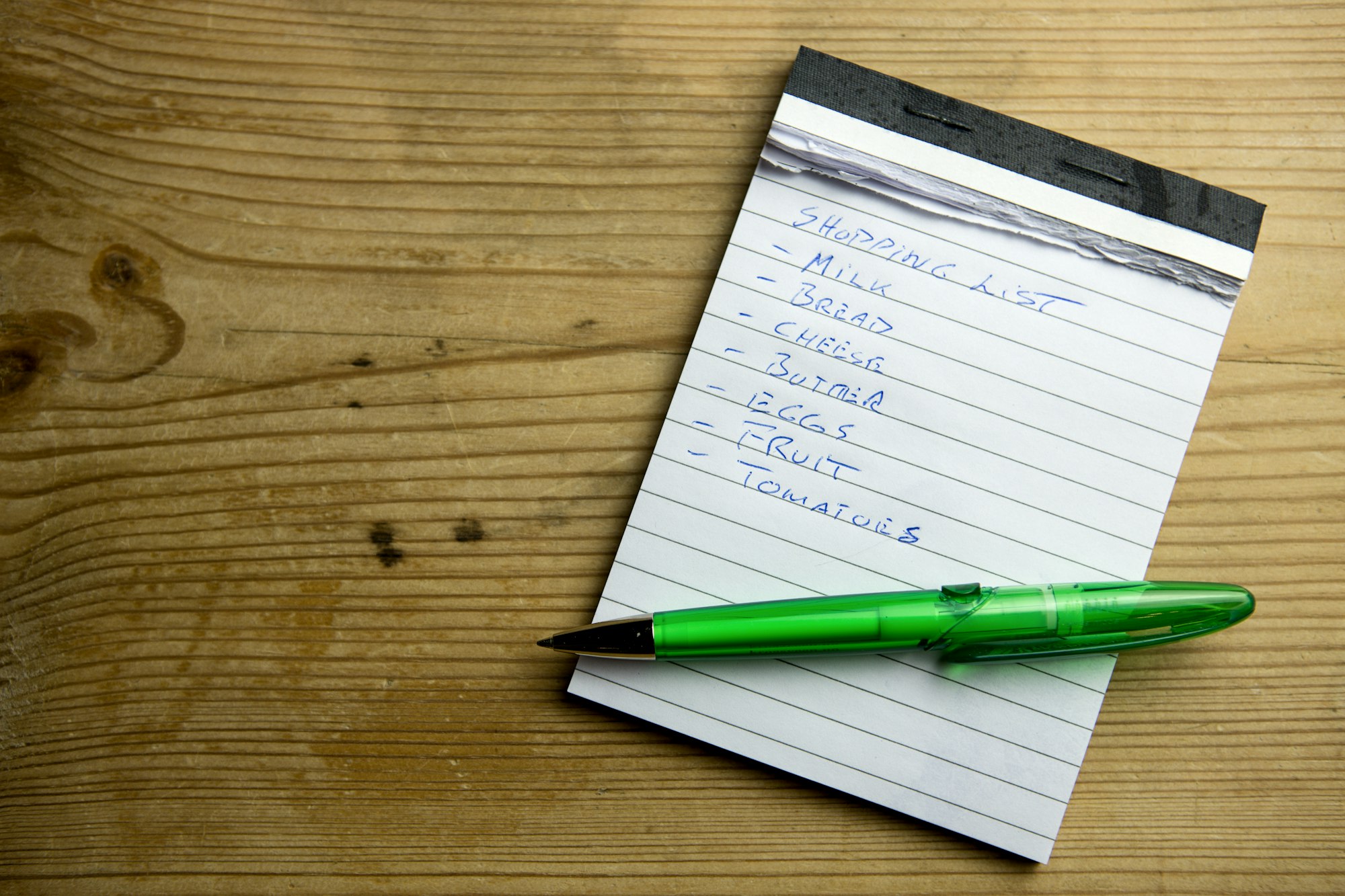
Minimalist Planning Techniques
Exploring Minimalist Planning Methods
Minimalist planning methods offer a refreshing and straightforward approach to organization. For simplicity seekers who value decluttering their lives, combining minimalism and planning can be a perfect fit. Here's how you can embrace minimalist planning:
Minimalist Planners
Consider using planners that have clean, uncluttered designs with ample white space. These planners focus on essential features like daily or weekly layouts without unnecessary embellishments. By using a minimalist planner, you can keep your planning process simple and free from distractions.
Focus on Key Goals
In minimalist planning, the emphasis is on identifying and pursuing your most important goals. Instead of overwhelming yourself with an extensive list of tasks, select a few key objectives for the day or week. This approach helps you maintain clarity and prioritize effectively.
Simplicity in Layout
Minimalist planners often feature straightforward layouts with sections for essential planning elements such as appointments, to-do lists, and notes. These layouts help you avoid the overwhelm of complex designs and extraneous details.
Embrace Digital Minimalism
For those who prefer digital planning, choose minimalist apps or software with clean interfaces and minimal features. Focus on tools that align with your goals and help you stay organized without excessive bells and whistles.
How to Declutter Your Planning Process
Simplifying your planning process is a crucial aspect of minimalist planning. Here are steps to declutter your planning process and reduce unnecessary complexity:
1. Review and Purge
Regularly review your planner or planning app to remove items that no longer serve a purpose. Delete completed tasks and appointments, and discard notes or plans that are no longer relevant. This ensures that your planning space remains clutter-free.
2. Streamline Categories
Consider consolidating categories or sections in your planner. For instance, merge separate sections for work and personal tasks if it simplifies your planning. Fewer categories make it easier to manage and navigate your planner.
3. Prioritize Ruthlessly
Minimalist planning encourages ruthless prioritization. Focus on the most important tasks and commitments while letting go of non-essential activities. This streamlines your to-do list and allows you to allocate your time and energy more efficiently.
4. Eliminate Duplication
Identify areas where you may be duplicating efforts. Are you maintaining multiple to-do lists or calendars? Consolidate your planning tools to reduce redundancy and maintain a single source of truth.
Benefits of Minimalist Planning
Minimalist planning offers several benefits that can significantly enhance your life:
Enhanced Clarity
By simplifying your planning process, you gain greater clarity and focus. You're less distracted by unnecessary details, allowing you to concentrate on your most critical goals and tasks.
Reduced Stress
Minimalist planning reduces the mental clutter associated with complex planning systems. This, in turn, lowers stress levels, as you can approach your day with a clear mind and a sense of purpose.
Improved Productivity
With minimalism, you can streamline your planning to prioritize what truly matters. This leads to improved productivity, as you dedicate your time and energy to high-impact activities.
Time Savings
Simplified planning methods save you time. You spend less effort navigating through cluttered planners or digital tools, leaving more time for essential tasks and leisure.
Better Work-Life Balance
Minimalist planning helps you strike a balance between work and personal life by focusing on what's most important in both domains. This balance contributes to a more fulfilling and harmonious lifestyle.
Minimalist planning isn't just about reducing physical clutter but also about decluttering your mind and lifestyle. By adopting minimalist planning techniques, you can experience increased simplicity, clarity, and effectiveness in both your planning process and your daily life.

Streamlined Planning Strategies
Streamlining Your Planning Process
Efficiency is the cornerstone of streamlined planning strategies. When you streamline your planning process, you optimize your workflow, save time, and reduce the likelihood of feeling overwhelmed by excessive details. Here's how you can achieve a more efficient and effective planning process:
1. Set Clear Objectives and Priorities
Begin by setting clear objectives and priorities for your planning efforts. Identify your most critical goals and tasks, both short-term and long-term. This clarity will guide your planning decisions and ensure that you focus on what truly matters.
2. Choose the Right Tools
Select planning tools that align with your objectives and preferences. Whether you prefer digital apps, physical planners, or a combination of both, ensure that your chosen tools support your planning needs and workflow.
3. Simplify Your Layout
Review the layout of your planner or digital planning tool. Simplify it by eliminating unnecessary sections or features that don't contribute to your goals. A clean and intuitive layout will help you navigate your planning tool with ease.
4. Create Templates
Consider creating planning templates for recurring tasks or projects. Templates save time and ensure consistency in your planning process. For instance, if you have a weekly meeting, create a template that includes all the necessary details, so you don't have to start from scratch each time.
5. Time Blocking
Implement time blocking, where you allocate specific time blocks for different tasks or categories. This technique ensures that you allocate enough time for each activity and minimizes multitasking, which can reduce overall productivity.
6. Weekly and Monthly Reviews
Incorporate weekly and monthly reviews into your planning routine. These reviews help you reflect on your progress, adjust your goals, and ensure alignment with your priorities. Regular reviews also allow you to declutter and update your plans as needed.
7. Limit Notifications
If you use digital planning tools or apps, limit notifications to reduce distractions. Turn off non-essential alerts and notifications that can interrupt your planning and workflow. Reserve specific times for checking messages and notifications separately from your planning time.
8. Delegate and Collaborate
Streamlined planning doesn't mean doing everything yourself. If possible, delegate tasks or collaborate with others on projects. This frees up your time and resources, allowing you to focus on high-impact tasks.
9. Automate Routine Tasks
Explore automation tools and techniques for routine tasks, such as email filtering, task reminders, or calendar scheduling. Automation can save you time and ensure that essential activities are not overlooked.
10. Regularly Evaluate and Adjust
Maintain a proactive approach to your planning process by regularly evaluating its effectiveness. Are there areas where you can further streamline or improve efficiency? Adjust your strategies as needed to stay aligned with your objectives.
Streamlined planning strategies are all about optimizing your planning process to achieve more with less effort. By implementing these techniques, you can enhance efficiency, reduce stress, and make the most of your planning efforts. Remember that the goal is to simplify and streamline, allowing you to focus on what truly matters in your personal and professional life.
Tools and Resources
A collection of tools and resources that can make planning easier for non-planners.
From mystical content to simple daily planners PlanningAddicts.com has a variety of planners to use for yourself or to turn into targeted help for your customers.
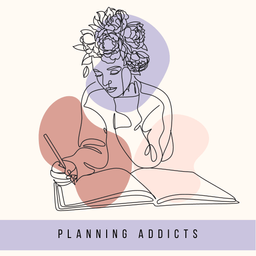
Creative Mama Designs offers a variety of Private Label Rights (PLR) products, including journals, planners, affirmation cards, and various templates. The site caters to various themes like self-care, productivity, spirituality, and more, providing digital products for personal or business use.

Thrive Anywhere offers a range of pre-made workbooks and journals on topics like personal development, business strategies, and self-care. The products are designed to assist individuals and businesses in areas like goal setting, productivity, and wellness, offering resources for personal growth and professional success.
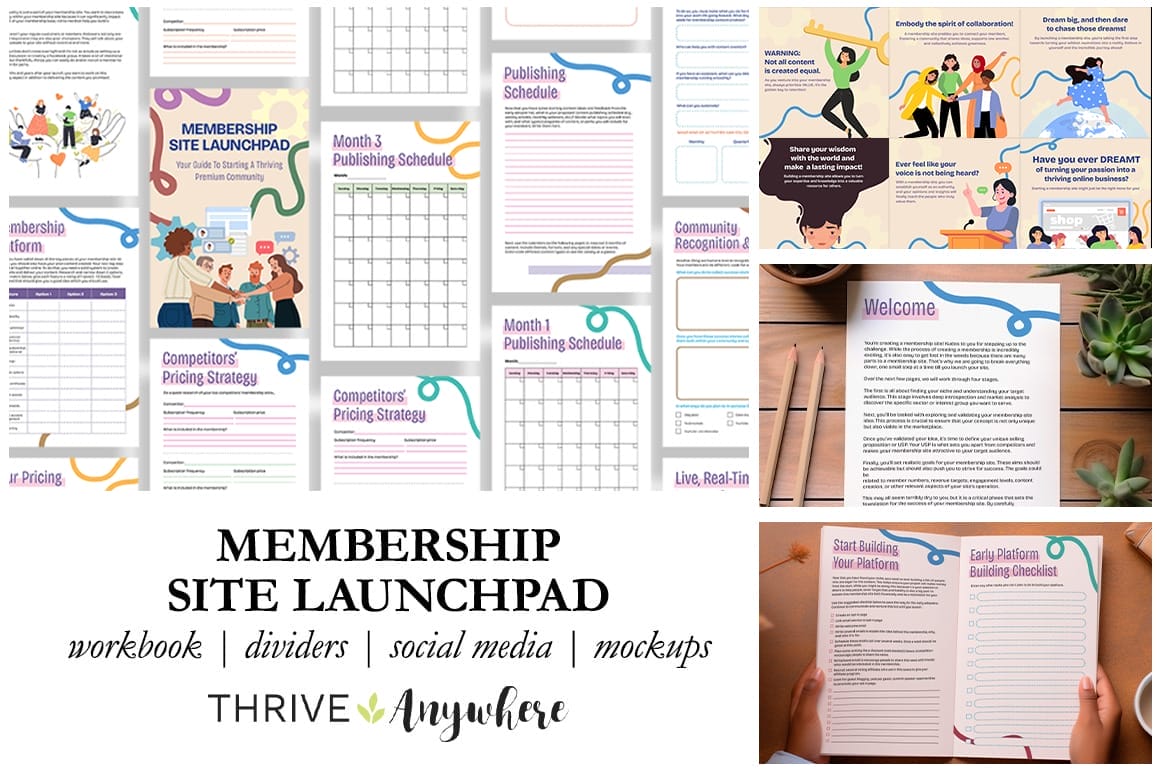
Cool Bean Design is dedicated to offering a collection of PLR (private label rights) and commercial-use templates, designed by MaryJo, a blogger and personal development coach.

Did this help you or overwhelm you with information? I'm hoping you could take a nugget or two that helps you start planning simply.
Embracing planning doesn't mean you have to change your entire personality or lifestyle. It's about finding the right approach that suits your unique preferences and needs.
By understanding the benefits, exploring simple planner solutions, and implementing easy planning tips, you can gradually transform into an organized and productive individual, while still staying true to your non-planner nature.
Take the First Step
If you cater to an audience who needs help in planning some aspect of their life, explore the resources shared above and use the PLR content to give your people what they need for a better, more organized life.
TLDR: The benefits of planning for a non-planner type personality.
- Stress Reduction: Planning reduces anxiety and uncertainty, providing a sense of control over your life.
- Increased Productivity: By outlining your tasks and priorities, you can enhance your productivity and accomplish more.
- Improved Time Management: Planning allows you to allocate your time more efficiently, ensuring that you make the most of your day.
- Work-Life Balance: With effective planning, you can strike a balance between work and personal life, leading to greater overall satisfaction.
- Enhanced Clarity: Planning brings clarity to your goals and priorities, helping you maintain focus and direction.
- Better Goal Achievement: By setting and tracking your goals, you increase your chances of success in both your personal and professional life.
- Simplified Planning: Minimalist and streamlined planning methods declutter your planning process, making it more manageable and effective.
- Adaptability and Flexibility: Planning doesn't eliminate spontaneity; it enhances it by allowing you to make intentional choices.
- Efficiency: Streamlined planning strategies optimize your workflow, saving time and reducing stress.
- Ruthless Prioritization: Minimalist planning encourages you to focus on what truly matters and let go of non-essential tasks and commitments.
